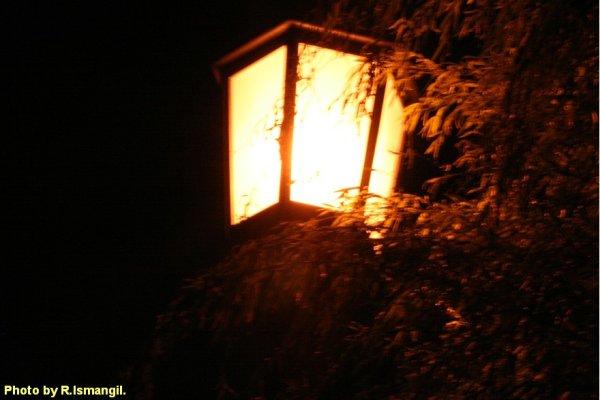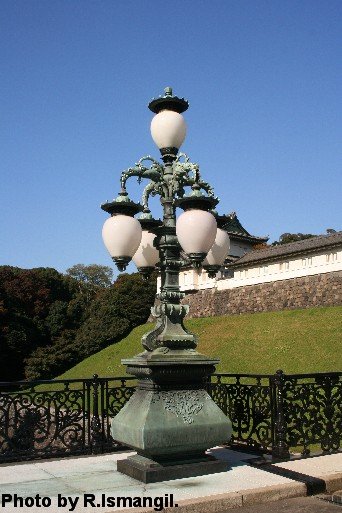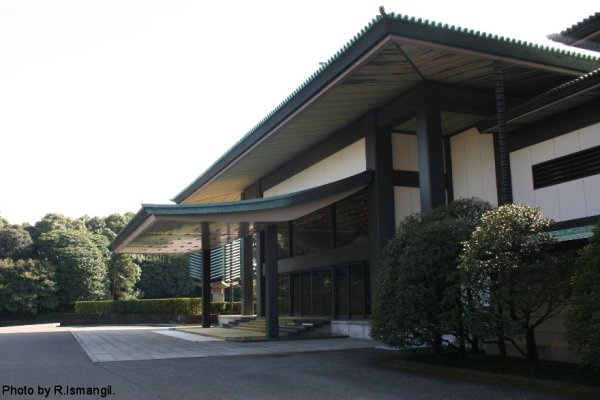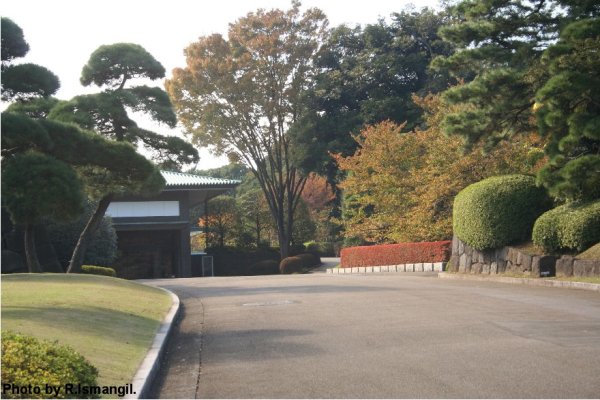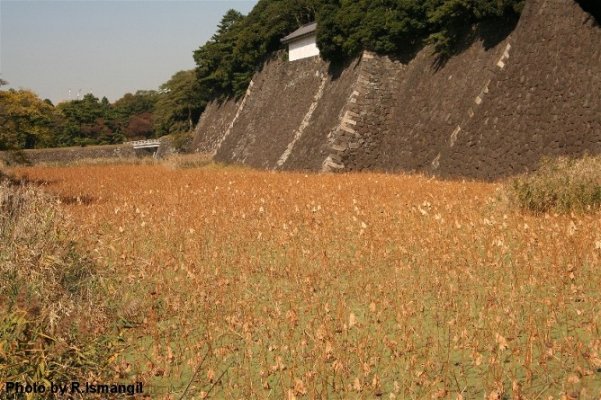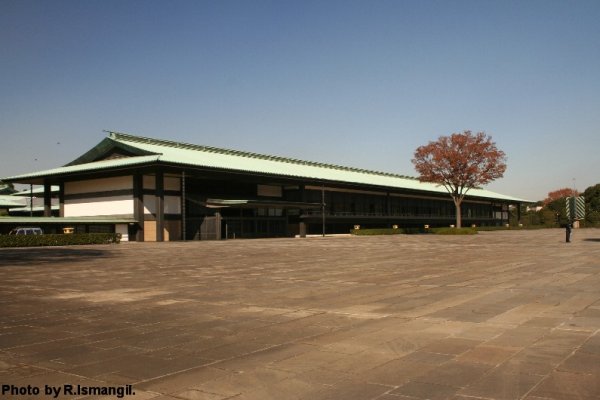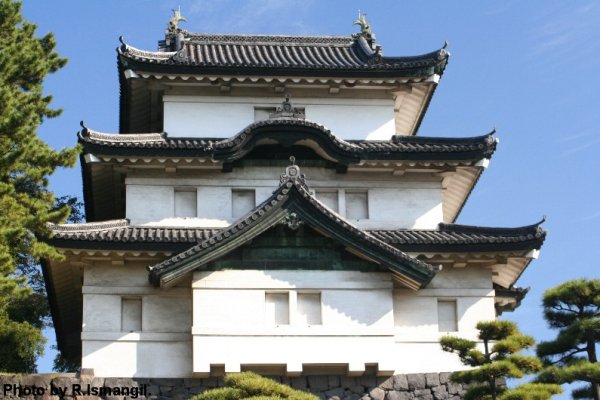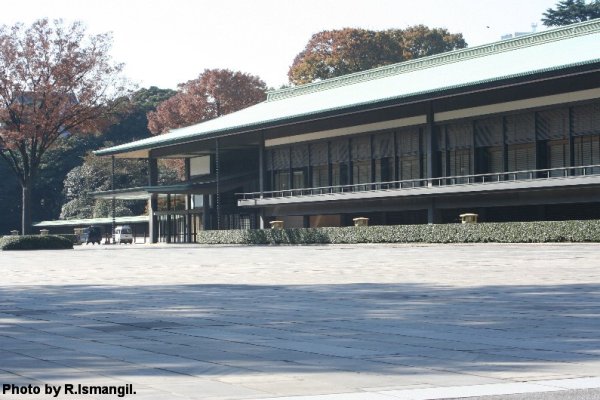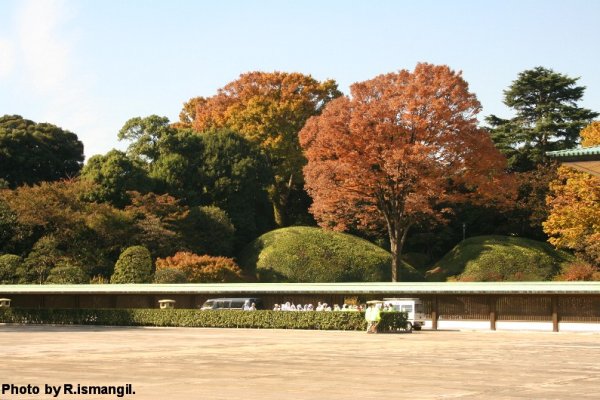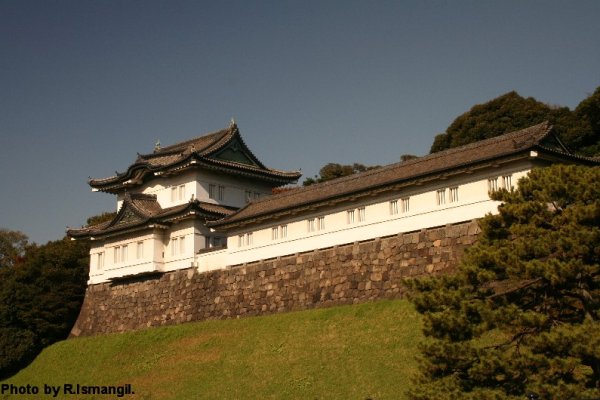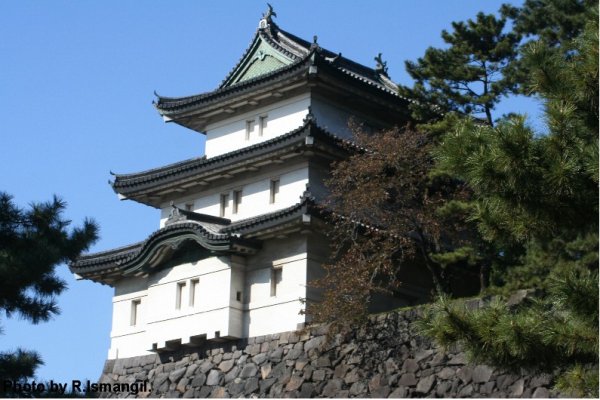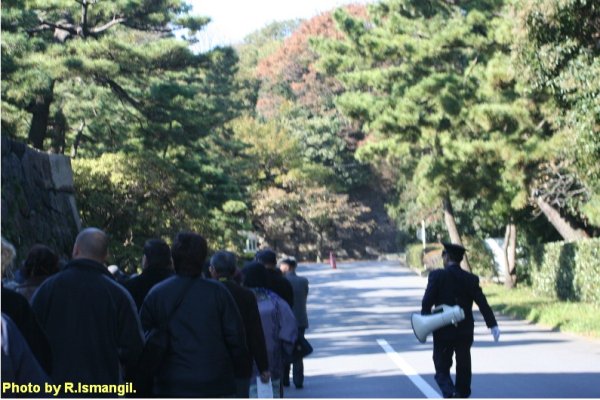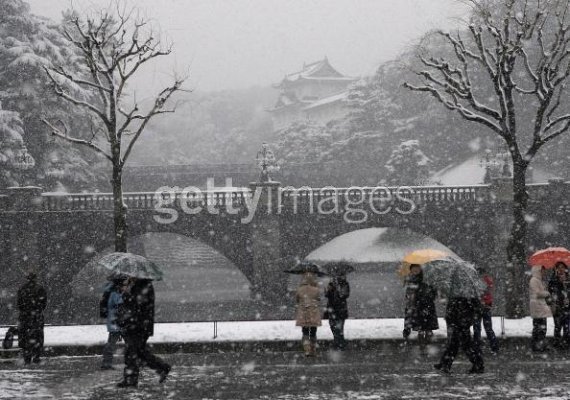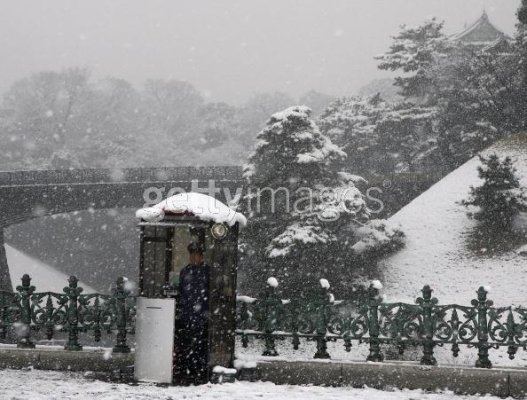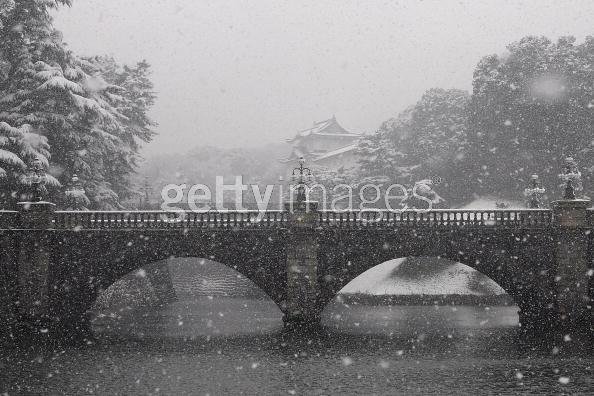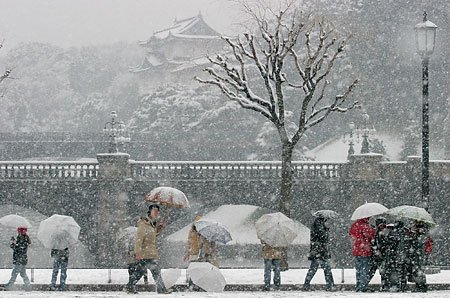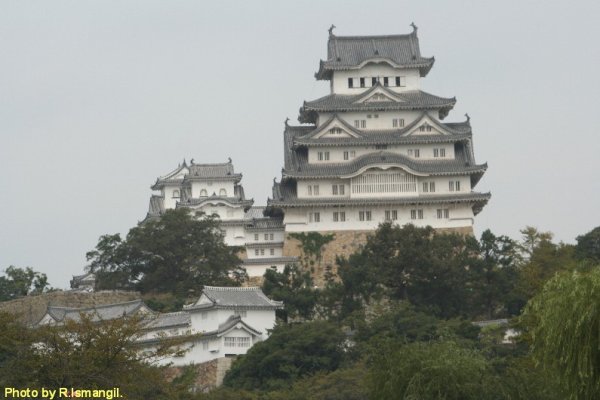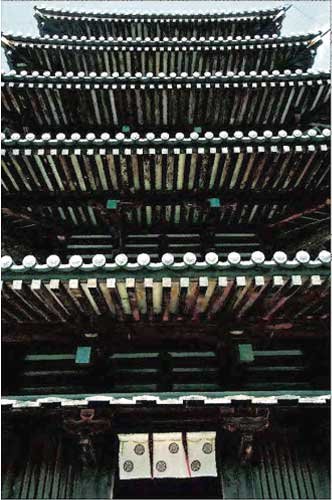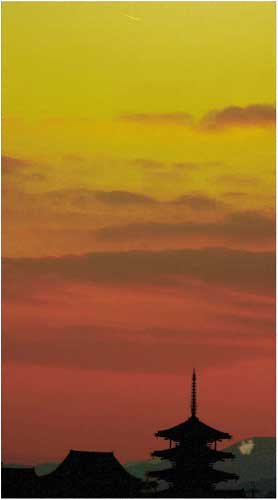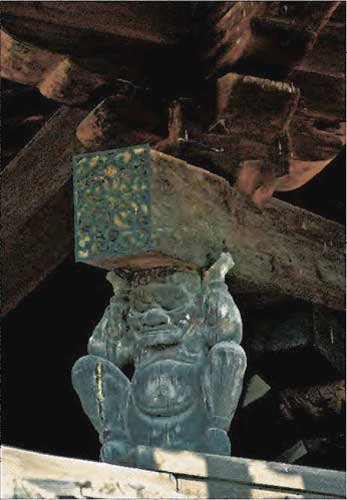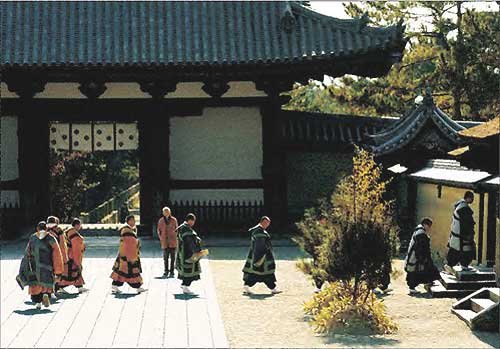mandyy
Heir Presumptive
- Joined
- Oct 4, 2004
- Messages
- 2,615
- Country
- Canada
A Rare Peek Into Tokyo's Imperial Palace
Young people who live in Tokyo might think that the Imperial Palace, in the heart of the cosmopolitan city of Tokyo, is just a symbol of an old-fashioned monarchy system, fulfilled with a serial of controversy. For others, the East Garden, which is open for public everyday except on national days, might be a nice jogging track or a suitable choice for strolling in a lazy afternoon.
But for the older generation and foreign tourists, the palace is still a popular destination to visit and tour.
On one sunny day last month, I joined a group tour -- made up mostly of those over 65 -- to enter the Imperial Palace. The Imperial Household Agency organizes a regular 90-minute tour inside the complex, but everyone who is interested should apply three or four months in advance. As for my group, a Japanese volunteer arranged the tour way back in 2004. In fact, there is always a long queue for this popular tour..........
http://news.search.yahoo.com/news/search?p=Princess+Masako&ei=UTF-8&fl=0&datesort=1
Photos from Ohmy news
#1: A corner in the complex with police box
#2: Emperor Akihito prepares to greet the crowd on his birthday on Dec. 23, 2004
#3:Fujimi-gayura, this watchtower was reconstructed in 1569 and is one of the oldest remnants of Edo Castle.
#4:Fushimi-yagura, this was moved to the Imperial Palace complex from Fushimi Castle in Kyoto.
#5: Map of Imperial Palace situated in downtown Tokyo
#6: The Chowaden Hall is a part of the Imperial Palace. In front of this building, the Emperor and his family stand on a balcony to greet people on bis birthday (Dec. 23) and on New Year's.
#7: Moat in front of the Kikyo-mon Gate
#8: The head office of the Imperial Household Agency. It was used as the temporary Imperial Palace for some years after World War II until the new Imperial Palace was built.
Young people who live in Tokyo might think that the Imperial Palace, in the heart of the cosmopolitan city of Tokyo, is just a symbol of an old-fashioned monarchy system, fulfilled with a serial of controversy. For others, the East Garden, which is open for public everyday except on national days, might be a nice jogging track or a suitable choice for strolling in a lazy afternoon.
But for the older generation and foreign tourists, the palace is still a popular destination to visit and tour.
On one sunny day last month, I joined a group tour -- made up mostly of those over 65 -- to enter the Imperial Palace. The Imperial Household Agency organizes a regular 90-minute tour inside the complex, but everyone who is interested should apply three or four months in advance. As for my group, a Japanese volunteer arranged the tour way back in 2004. In fact, there is always a long queue for this popular tour..........
http://news.search.yahoo.com/news/search?p=Princess+Masako&ei=UTF-8&fl=0&datesort=1
Photos from Ohmy news
#1: A corner in the complex with police box
#2: Emperor Akihito prepares to greet the crowd on his birthday on Dec. 23, 2004
#3:Fujimi-gayura, this watchtower was reconstructed in 1569 and is one of the oldest remnants of Edo Castle.
#4:Fushimi-yagura, this was moved to the Imperial Palace complex from Fushimi Castle in Kyoto.
#5: Map of Imperial Palace situated in downtown Tokyo
#6: The Chowaden Hall is a part of the Imperial Palace. In front of this building, the Emperor and his family stand on a balcony to greet people on bis birthday (Dec. 23) and on New Year's.
#7: Moat in front of the Kikyo-mon Gate
#8: The head office of the Imperial Household Agency. It was used as the temporary Imperial Palace for some years after World War II until the new Imperial Palace was built.
Attachments
-
![todd_265483_1[401788].jpg](/data/attachments/165/165110-28116eae1ec1cb0d81f77a7aeda881dd.jpg) todd_265483_1[401788].jpg55.6 KB · Views: 973
todd_265483_1[401788].jpg55.6 KB · Views: 973 -
![todd_265483_1[401790].jpg](/data/attachments/165/165111-fe94f0bb940c980d2546da5057241a70.jpg) todd_265483_1[401790].jpg136.6 KB · Views: 609
todd_265483_1[401790].jpg136.6 KB · Views: 609 -
![todd_265483_1[401820].jpg](/data/attachments/165/165112-003da64559ed89b30c4cfb8b2310c265.jpg) todd_265483_1[401820].jpg68.1 KB · Views: 755
todd_265483_1[401820].jpg68.1 KB · Views: 755 -
![todd_265483_1[401821].jpg](/data/attachments/165/165113-b2fdd441a21d104d7b763294631075f5.jpg) todd_265483_1[401821].jpg194.4 KB · Views: 853
todd_265483_1[401821].jpg194.4 KB · Views: 853 -
![todd_265483_1[401823].jpg](/data/attachments/165/165114-866118803d23adde17b422ceb0655231.jpg) todd_265483_1[401823].jpg53.4 KB · Views: 699
todd_265483_1[401823].jpg53.4 KB · Views: 699 -
![todd_265483_1[401825].jpg](/data/attachments/165/165115-79e05b6b6616b6d5f7fab16e275ce5da.jpg) todd_265483_1[401825].jpg107 KB · Views: 668
todd_265483_1[401825].jpg107 KB · Views: 668 -
![todd_265483_1[401787].jpg](/data/attachments/165/165109-edce06cfb045a7dd0ae953aabc1c608f.jpg) todd_265483_1[401787].jpg109.9 KB · Views: 586
todd_265483_1[401787].jpg109.9 KB · Views: 586 -
![todd_265483_1[401824].jpg](/data/attachments/165/165116-83dceea518aa7a68e19279659d7ef3cd.jpg) todd_265483_1[401824].jpg53.7 KB · Views: 709
todd_265483_1[401824].jpg53.7 KB · Views: 709
Last edited by a moderator:


